December 8-12 and December 13-22, 2022
Factor e Farm, Maysvile, Missouri + Kansas City Area, USA
- December 8-12, 2022 – Build a complete Seed Eco-Home – 1300 square feet – starting from a foundation, with a swarm build crew of 24 people – in only 5 days.
- December 13-22, 2022 – Build a 2000 square foot version of the Seed Eco-Home – starting from a foundation – in only 10 days.
Build Yourself. Build Your World. Join an experience that will change what you think is possible.
We have big plans for the holiday season. We are building a small house – in only 5 days – to reinvent how housing in built. And you’re invited to join us.
We are building an efficient, 1300 square foot Seed Eco-Home with 6 kW of solar electric – site-built and code-compliant. Here’s your chance to participate hands-on – as part of our team building process.
We will be building a home that looks like this, the 1000 square foot Rosebud Model which we prototyped at our home facility:
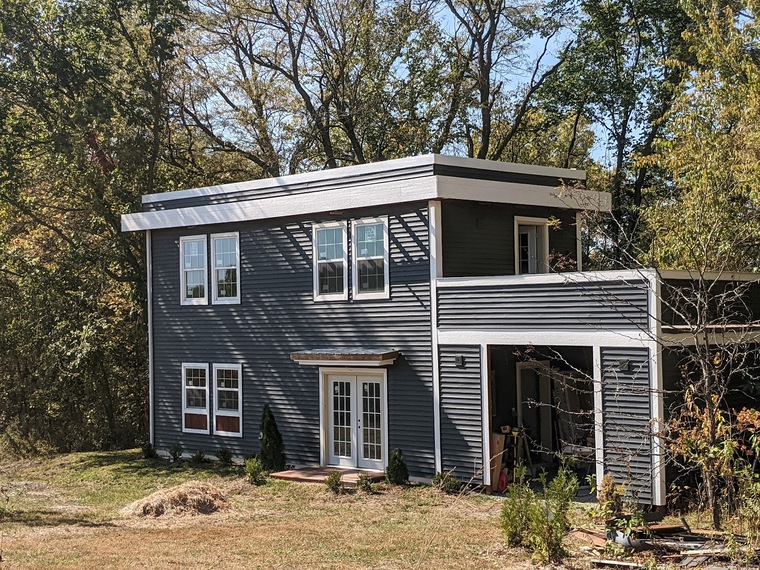
We have been working since 2016 to optimize the Seed Eco-Home conept – as the easiest to build, lowest cost, high performance house. The above is the minimum 1000 square foot build, 2 bed 2 bath. Between December 8-12 – we will be building a slightly extended, 1300 sf version of this structure in Maysville, MO. It will be 3 bed and 2 bath, which is a popular bed-bath size in our area. You can see all documentation here, full design is here in FreeCAD, full bill of materials stands at $57k including 6 kW of PV, and the engineering plans are here – which you can take to your building department to get a permit. We have hundreds of pages of system design documenation such as the Rosebud Building Book, the House Design Guide (key design elements), Electrical Design Guide, the Seed Eco-Home 2 Plumbing Design, and Seed Eco-Home Electrical Design , PV system, and 2700 pictures.
Take a look at the original promise of the Open Building Institute modular construction system:
The December build delivers on most of the original promise: modularity, low cost, high performance, and build times that are meeting and exceeding expectations.
In 2016 we proved that a team of 50 novices – could build the original Seed Eco-Home – in just 5 days. We then demonstrated the build of an entire floor – in only one hour. Since then, we have designed the utilities and other components – right into the modules – instead of doing these as a separate step later. This allows us to build even faster. We have developed the various utility and house finishing modules that allow us to make easy modifications on the core 1000 square foot Rosebud Model. The result? You can now build an optimized – simplest – lowest cost – code compliant house – using easy-to-source, off-the-shelf materials. Because the design is modular, you can remix the modules easily to obtain many variations in size and shape.
From December 13-22 – we will be doing a 10 day build of this 2000 square foot structure, which is effectively the original 1000 square foot model – with another 1000 square feet of living space behind it in a staggered configuration like this:
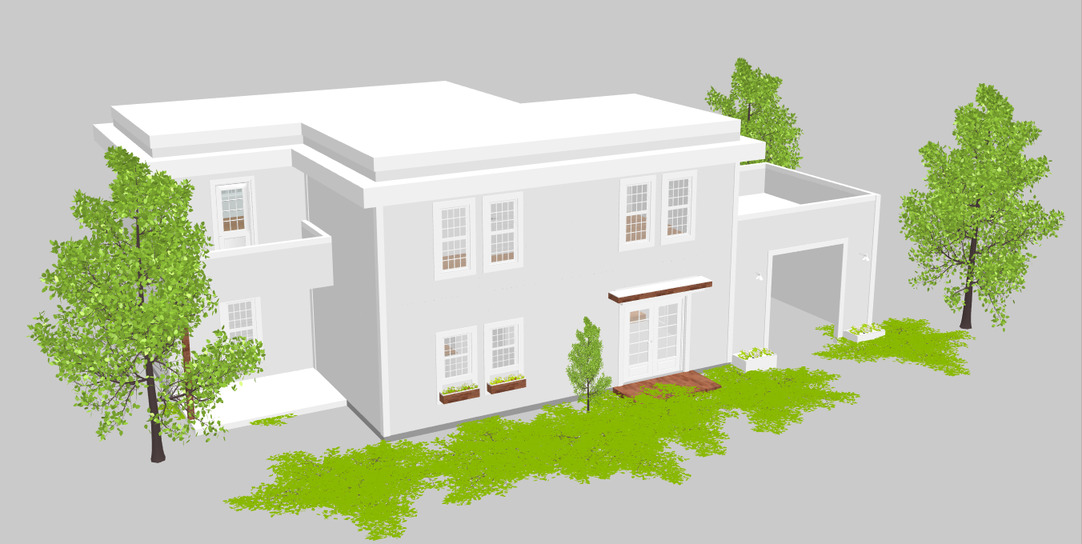
We will be building this 30 minutes away in the city of Savannah, Missouri.
The Extreme Build Experience (XBX) allows you to participate in a wide range of tasks, during the full, rapid build of a real house. Participants will be equipped with build cheatsheet and tools (cordless drill, tape measure, hammer, etc) – and experienced builders will provide guidance. Learning occurs mostly by hands-on practice – based on exhaustive documentation that is made available before, during, and after the build. We strive to create a supportive learning environment – there are no mistakes – only learnings. The focus is on experiential learning that connects theory to practice. It is up to participants how much they want to learn: for best results, we recommend studying our materials before arrival. However, we went through great effort to select the most robust and foolproof build techniques – as we want everyone to be empowered by the power of raw production. Some of the tasks that we execute include:
- Framing – building wall modules, floors, roofs, ceilings, and all of the structure, plus interior/exterior sheathing
- PV system install including mounting hybrid inverter, transfer switch, disconnect, breaker panel, grounding.
- Wires – Prewiring, wiring outlets, wiring devices using wire nuts and Wago lever nuts, outlet covers
- QC -Performing quality control such as pressure test of water supply, vacuum test of plumbing, safe testing of all wiring circuits
- Complete plumbing system – for bath, kitchen, washer, dishwasher, water heater, and exterior hose bib
- Flat EPDM roof – highly insulated, 4″ slope over 16 feet, allowing for easy vertical expansion. EPDM attachment, fasteners,
- Fasteners – from screws, trim screws, nails, finish nails, wire staples, pipe support, joist hangers, nail plates, gaskets, pocket screws, dowels, mudsill concrete anchors, and ramset nails
- Plumbing – Traps, drains, vents, air admittance valves, overflows
- Water supply and plumbing – using code compliant Shark bite quick connect fittings
- Ceiling installation, and non-condensing roof insulation.
- Finished floors – wood and concrete floors
- Power – Wiring up service entrance for electrical, Ufer ground, bonding, AFCI and GFCI breakers, exterior outlets and lights.
- Building Kitchen cabinets using easy to build techniques
- Installing Lights, smoke alarms, motion sensing lights, doorbell
- Appliances – Installing shower, toilet, sink, kitchen cabinets, and appliances includingSuperefficient washer, dryer, heat pump, dish washer, minitank water heater, water saving shower head, refrigerator, warm water bidet hookup, bathroom exhaust fan plumbing.
- Heat pump – efficient cooler/heater down to -22F – involves mounting, drainage, refrigerant line cutting, and plumbing
- Leak-free Window, door, doorknob installation. Bulletproof water sealing techniques.
- Vinyl siding installations, making leak-proof penetrations, waterproofing detail and decorative trellis.
- Garage with garage doors.
- Trellis, canopy, porch, deck – easy-to-build deck techniques
- Paint, stain, concrete sealer, caulk, firestop, mastic, rubber glue
- Finishing detail and trim
You can choose any of the tasks, and the longer you participate, the more chance you have to participate in all the tasks.
There are two ways to participate: Apply to become a crew leader, or register as a crew member.
- Crew Leaders are responsible for specific building tasks, managing their assigned crew members, and teaching basic construction skills. We are looking for competent builders who are open to learning the Seed Eco-Home playbook. Select crew leaders will be chosen for additional paid opportunities to help us prepare both building sites. To become a crew leader, applicants must complete a short online application, complete a virtual interview, and participate in 5 preparatory webinars. Crew leaders will earn $2k for the 5 day build, and we may go longer in a given day if the tasks are not finished. We will also reserve AirBNBs in the area, and crew leaders will also be reimbursed for lodging expenses. We will coordinate transportation of crew leaders from theAir BnBs.
Apply Here to become a Crew Leader
- Crew Members are there for the learning experience. To offset registration costs, Crew Members may also volunteer to help us prepare between November 25-December 7. Volunteers earn a 1 day discount for every day they volunteer.
Register here (below) to become a crew member.
You can choose the crew leaders you would like to work with, and we will be flexible in accommodating participants’ learning needs. We focus on production and education at the same time – which is why we opened this event to the public. As opposed to working solely with a paid crew.
This is a radically experimental event. We are setting it up for success, inviting both paid leaders, and paying students (who sign up for this Extreme Build Experience). We will have novice builders learn from more experienced leaders, while working closely as a team. We all collaborate to finish the house on time. The crew leaders have to work hard by nature of their leadership position. Participants may take it more easy. When the house is finished, we are putting the house on the open market as a test of the revenue model of building homes. OSE, as a 501(c)3 nonprofit, is allocating all revenue to develop an Apprenticeship program for builders.
Our revenue model is designed to work with or without public participation. Ie, it must work with volunteers, with paid workers, or with paying students – or any combination of these. Currently our main rollout involves creating a program where 24 Apprentices can build each house in a week. Right now we are testing the financial model. On our first build for the open market, we are involving the greater public so that we are true to our education mission – inspiring our audience with an experience that they could not get anywhere else.
It is in this nature that we invite the general public to participate in our builds. For transparency – we include this diagram of our Build Crew selection process.

Pre-Event:
- Pre-Event Study – 12 Sessions of OBI Webinars from 2017 to get you positioned in the framework of modular, open, collaborative design. This is optional viewing if you are interested in our earlier developments on the Seed Eco-Home and Aquaponic Greenhouse.
- Mandatory for Crew Leaders, Optional for Registrants: 8 -9 PM CST USA Time – Tuesday – Saturday- Nov 29- Dec 3 – 5 day webinar series. These are intended to be broad overviews to facilitate collaboration once on site, with insights specific to the builds.
- OSE + OBI Introduction – Collaborative Design for a Transparent and Inclusive Economy of Abundance. How we can provide material needs to everyone as a foundation for societies that thrive on earth, as opposed to destroying it.
- House Design Guide: the Seed Eco-Home Modular Build System – how we design the simplest, highest performance, code compliant housing. From shallow insulated foundation, modular framing, utilities, kitchen, bathroom, interior finishing, roof, insulation, plumbing, electrical, carport, PV. Code basics.
- Swarm Build Techniques: Role Division and Workflow in Extreme Builds – the framework of modular, swarm builds applied to a 1000, 2000 sf Build, and Building a City Block. Workflow design and build order. Requirements for a successful build. Understanding what can be done in parallel, prepared ahead of time, outsourced, automated, or designed out. Working with CAD, BOMs, and build instructions and cheatsheets. Quality control. Limits to swarming.
- How to Build a Seed Eco-Home – Tool use, measuring and marking, cutting, tool selection. Critical tools for building the Seed Eco-Home. Safety, awareness, build techniques, working alone vs working as a team. One vs 2 floors. Quality control and process for each part.
- Utilities and Finishing – PV system, Heat Pump, Utility Channel, Breaker Box, Water Heater, Washer, Dishwasher, Induction Cooktop, Bidet. Water saving and energy efficiency measures, starting from earth contact to pea gravel on roof.
December 8-12, 2022:
- 7:30-11 AM – Morning Session – build overview for half hour, then at 8:00 – build start. Either inside workshop, or outside if weather is nice on the first 2 days. After Day 2 it’s mostly indoors as the structure is closed in.
- 11-12:00 PM – Lunch and coordination session. At build site, with food truck feeding us.
- 12:00 – 5 PM – Afternoon build session.
Intended Schedule with 24+ Active Participants:
- Day 1 – First Floor Framing and 2nd Story Platform. Expected production rate is first floor done by the morning, as we have most of the wall modules framed (prebuilt already) and we need to make only a few new ones. We will spend time integrating plumbing and electrical into the modules. Concurrent tasks include the stairs and landing, begun at the start and installed once the first floor walls are up – for easy access to the second floor. Other concurrent tasks are mounting the sill plate, framing, top plate, water fittings, plumbing fittings, electrical boxes, prewiring electrical boxes. Production rate is expected 1 hr per module, 12 teams of 2 building 12 modules per hour. with 12 teams of 2 people. Optimal schedule: walls installed in by 10AM on the first floor, and floor joists installed in another hour using prepared edge joists with markers. Nailed off by noon with 6 palm nailers. Subfloor started right after lunch. Unfinished tasks from morning spill into afternoon, but definitely the entire first floor is enclosed by Day 1. This assumes 24 cordless drills, 6 cordless circular saws, 6 palm nailers, and 6 nail guns operating at the same time.
- Day 2 – Second Floor Framing and Roof Structure to Close-In. This requires lifting of the modules to the second floor, which is done with tractor loader. We can begin to parallel on the first floor interior wiring rough finishing, plumbing rough finishing, and water rough finishing. Includes plumbing the tubs and showers, toilet flanges, water pressure test, plumbing vacuum test. Others can begin on housewrap and exterior siding as soon as the first floor is completed, along with stairs+landing, canopy, carport, EPDM on roof and carport, decorative band modules.
- Day 3 – Insulation installation and interior wall sheathing on first and second floor. We can add work on the PV system, heat pump – with heat pump being a priority for sake of interior heat and painting. Electrical finishing minus the wall plates can start as soon as interior walls are clad. Kitchen cabinets and bathroom sinks can be started but not installed, as painting needs to happen first.
- Day 4 – All former tasks including wall sheathing, outlets, painting are continued and finished. Utility channel and trim is started, wall outlet covers, lights, kitchen and bathroom cabinets installed. Appliances are installed. Others can start on driveway, PV system completion, and laying gravel ballast on roof. Gutter, canopy, front porch, and trellis can be installed once siding is finished. Light fixtures + smoke alarms can be installed. Once trim and interior finish is done, we can lay the floor on the second floor, and once interior is finished on the first floor, we can stain or epoxy the concrete for a finish floor.
- Day 5 – Buffer day.
December 13-22, 2022: Pre-event and daily schedule is same as for Dec 8-12 session. The day-by-day play is essentially the doubling of time, for the same corresponding tasks, but considerably larger finished structure:
- Day 1-2 – First Floor Framing and 2nd Story Platform. If production rate is 1 hr per module, then the first day yields 48 modules by 1 PM – now with a seasoned crew assuming some team members will carry over from Extreme Build Experience 1. This means that we can finish all the 96 exterior wall module prep by end of Day 1, and coninue installing on Day 2. We can reasonably expect close-in with the roof on the second day. The floor joists and roof joists should go up rapidly, given these are premarked with placeholders that allow the joists to slip in vertically like in a ready-made slot. We would only need the same number of tools as before, but the process just takes 2x as long. The first floor is expected to be easy, because the second 1000 square feet is an almost exact replica of the first. There is no additional design complexity involved. So we simply double the time. The stairs should be built and installed as early as possible, just like in the first build.
- Day 3-4 – Second Floor Framing and Roof Structure to Close-In. This requires lifting of the modules to the second floor, which is done via the stairs, via scaffolding, or lifted with tractor loader. Same tasks can be done as Day 2 of the first build. All electrical wires are connected to their respective nodes (outlets), so we are ready for insulation and interior walls on Day 5.
- Day 5-6 – Insulation, interior walls, and heat pump are a priority. Running the heat pump, we can paint. Because the phase up to paining can be a potential bottleneck, everyone who is available can begin paintings interior sections as soon as the area is cleaned and vacuumed.
- Day 7-8 – Same as day 4 of Build 1. Given that some already had practice in the workflow in Build 1, completion should be straightforward with the biggest challenge being keeping warm – but that can be addressed with 2.4kW of collective body heat from participants and the structure closed in by Day 5. Additional heaters can be used, if the heat pump is not activated.
- Day 9-10– Buffer days.
- So you want to build your own house? The 5, 10, or 15 days are a true Builder Crash Course – with a finished product at the end of each Experience. This intensive experience provides you with extensive home building practice with rapid hands-on learning, with optimized designs. Combined with the 5 webinar sessions, we cover site planning, foundations, insulation, engineering, design, wiring, plumbing, tool knowledge, modular building design, and collaborative build procedures. Whether you have not even considered building your own home – or you are itching to build one – this experience will open up new possibilities for you. We demistify construction and provide optimized techniques, so that you don’t suffer like typical beginning builders, as you gain bulletproof confidence and skills for completing a house build project. We are working hard to make a comprehensive, high quality, rapid learning experience – and we guarantee you that if you do not learn enough skills in the 15 days, you can repeat the course, for free – until you are completely comfortable building your home. See our Rosebud Home Builder Guarantee.
- So you are a learning machine? If you love to learn new things, but don’t have much time – and want only the most rapid and relevant learning – this is your chance. If you have very little build skill but would like to increase your ability significantly, this program will provide the most breadth of experience in the shortest time possible. If you simply want to get exposed to what efficient swarm builds look like and feel like – to see if building your home is something that you will enjoy – this is a great opportunity. But be prepared – building things isn’t easy. It takes a mindset of desire to learn.
- Do you want your own dream home without getting into debt, but are not a builder? Sponsor somebody that you can then hire to build for you. You will likely save tens of thousands of dollars in build costs if you do this, compared to hiring somebody else to build. Our Extreme Build Experience provides you the most complete experience of building a house – at the lowest possible cost. Cost reduction comes from optimized design, and optimized modular build technique.
- Entrepreneurship and Un-jobbing. Going through our intensive experience is designed to open the option to a robust entrepreneurial possibility. If you are entrepreneurial, want to run a crew to build for you – and pay them an outlier wage – then in-depth experience with our optimized build techniques can pave the way for a successful enterprise. The hands-on experience will provide you the insight to build efficiently and succeed. Housing is a trillion dollar market, so you cannot go hungry if you can build houses.
- Inspiration. If you would like to develop a more optimistic viewpoint of the state of the world, we are likely to infect you with optimism that comes from one’s ability to build physical things – literally to build their world. If you want to change the world and are looking for direction or inspiration, you’ll learn that the best way to invent the future is to build it. If you are interested in reinventing the economy through collaborative design and distributed production using open source – you will be inspired by the opportunities that this event may produce for you. We believe that the more any individual understands about production and building of things – the more independent one becomes from political manipulation, and the better world citizen one becomes. This is badly needed today.

Marcin Jakubowski – Build Lead and Quality Control
Marcin was trained as a fusion physicist. He left academia right after finishing his Ph.D. to start a farm – in Missouri – and founded Open Source Ecology. For the last 10 years, he has been working on the Global Village Construction Set – now 1/3 complete – a set of enabling tools and machines for building regenerative infrastructures. Marcin is passionate about creating the Open Source Economy – a new operating system for Earth.
See Marcin’s bio and his Global Village Construction Set TED Talk

Catarina Mota – Lead Seed Eco-Home Designer
Catarina is an open source advocate. She founded the Open Building Institute, co-founded Open Materials (do-it-yourself smart materials) and AltLab (Lisbon’s hackerspace). Previously, she co-chaired the Open Hardware Summit 2012, served on the board of directors of the Open Source Hardware Association, taught as an adjunct faculty member at ITP-NYU, and was a fellow of the National Science and Technology Foundation of Portugal. Catarina holds a Ph.D. in communication sciences and her research work focuses on the social impact of open and collaborative practices for the development of technologies. She is a founding member the Open Source Hardware Association and a TED fellow.

Jon Miller – Chief of Staff
Jon Miller served eight years as an infantry officer in the United States Army before earning an MBA at the Yale School of Management. During his graduate studies, Jon founded Outlaws Inc., a for-profit veteran services company that is focused on improving outcomes for small businesses and transitioning service members. He has extensive experience working with the Department of Labor (DoL), Veterans Administration, and State Approving Agencies. He is helping OSE develop its DoL-certified apprenticeship for builders.
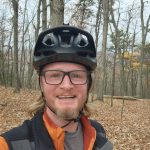
Richard Henegar – Crew Leader
A Navy veteran, small business owner, off-grid builder, and Engineering Lab Manager, Richard has a depth of experience matched only by his verve for making the world a better place. You might recognize him from his appearance on Ellen, where he was recognized for his philanthropic work. A native of Fincastle, VA, Richard is excited to meet the crew and be a part of the world’s first production Seed Eco-Home!
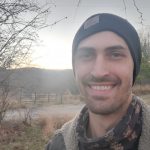
Aidan Williamson – Crew Leader
Hi, I am a can-do type grease monkey who has lately had as much sawdust in his eyes as metal chips in his hair. When I’m not turning wrenches on the mix of ancient, old, and new tractors, skidders, and heavy equipment that populates the hills of Southern West Virginia, I’m on my little slice of Earth building a small workshop/house. I’m looking forward to the privilege of freezing my tail off with a great group of people as we collaborate in this ambitious experiment because the one thing better than doing it yourself is doing it together!

Anthony Manalakos – Crew Leader
Who do you build for? This is the key question I’ve been asking as I’ve embarked on the open source ecology journey and as my guiding star when building out my own ideas. I am a vet and father so bringing in some of my military pals felt like perfect fit when helping to answer that key question. Now, a new mission begins. Where one house put my soul through the paces, I have now agreed to two. But this time it’s the retired cavalry bringing up the rear. I can’t wait!

BeLou – Crew Member
I am BeLou. i just be free. i live to help. i love to live. i am BeLou.

Enjolee Williams – Crew Member
Energetic Entrepreneur and former E-4 from New Orleans. Excited to be on the team!

Made Garner – Crew Member
Isaiah 65:21 They shall build houses and inhabit them; they shall plant vineyards and eat their fruit. I like long walks on the beach. I LIKE TURTLES. I like the option to be creative sometimes. I try to be diligent and versatile.
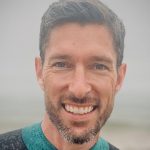
Brent Irwin – Crew Leader
Brent Irwin, a resident of Northwest Missouri, is a triathlete and father of four. A compliance officer for a bank, he is skilled in details and logistics. He is also a certified enneagram coach, a leader in men’s ministry at his church, and loves to sketch new design ideas for his home in his free time. Brent and his wife have resourcefully renovated two family homes.

Jessica Leete – Crew Leader
Jessica Leete is a designer, a licensed landscape architect, sculptor, urbanist, community catalyst and ecology educator. She is the founder of Boston dot dash Studio. The studio is the space for convergent thinking, design process, and construction regarding land and the systems that engage it to create regenerative solutions that reverse environmental degradation, are resilient, adaptable, and (through an engaged design process) provide training for an empowered community. A member of the Global Open Source Hardware (GOSH) movement, her particular interest lies in developing and making ubiquitous, open source hardware and technology for environmental metrics. To that end, she is collaborating with Open Source Ecology to enable universal access to collaborative design using open source toolchains.

Tom Griffing – Crew Leader
In my teens I learned about auto mechanics, built electronic projects and various science projects at home. I studied electrical engineering & computer science in college then worked in electronics R&D, designing and developing power electronics. I switched to technical writing on maintenance manuals for “down the hole” oilfield tools, and developed software at General Dynamics. I got into computer contracting for various companies, developing software and systems administration, mostly in the telecom and retail sectors. I Taught night time computer classes at Richland College, took a hydraulics course, did well with it and some related searching led to OSE around 2011 – worked on various projects, largely involving the Power Cube design. Currently: MIS Manager for a Dallas company, managing a small team for all computer systems, software and networking.

Scott Mader – Registrant
Scott is a silly goose and we’re exited he’s coming up for this build.
Getting to the build site and Factor e Farm
The nearest airport is Kansas City International (MCI), about 1:15 hours away from Factor e Farm. FeF is located in a rural zone and there is no public transportation of any kind in the immediate area, though buses do arrive in St. Joseph, Cameron, and a train station is found in Kansas City. Please schedule your departure on the day after the Camp if you need a ride to the airport.
We can pick up participants who are arriving by plane at the Kansas City International Airport the evening before the first day of each build. Otherwise, you will have to find your own transportation.
Lodging
We have reserved nearby Air BnB locations for crew leaders and have limited free lodging available to the first 10 registrants. XBX registrants may also offset the registration cost by arriving early to help prepare the Factor e Farm’s Hab Lab. See the registration section for details.
Transportation
We are scheduling airport pickup at 6 PM on the evening before the first day of the Extreme Build. We are scheduling an airport dropoff in the morning after the last day of each Extreme Build. Airport dropoff will be as early as needed for the first flight, so plan accordingly. Car rentals are available at the KCI airport, if you’d rather not wait for pick up or dropoff.
Since the round trip to the airport is 2:30 hours, ideally we would like to make only one trip to the airport at the times above. The MCI airport is small and there isn’t much to do there, but it has a few restaurants/cafes and quiet areas to rest. We will also try to coordinate transportation if any people arriving by car are willing to pick others up from the airport.
To the extent that it’s possible, we request that you try to schedule your flight arrival and departure as above to make logistics smoother.
For the work days, we will meet at Factor e Farm, or at the worksite. If you will be staying in Maysville or nearby, we can provide a ride to the worksite, otherwise you would need your own transportation.
Meals
OSE will provide lunch during the 5 and 10 day builds. Breakfast and dinner is on your own. There is a local grocery store in Maysville. If you need additional food, Cameron, Missouri, is 15 miles away and has a food store and a Walmart.
True Fans get a 20% discount.
Reduced admission cost by arriving early and volunteering. 1 day volunteering offsets 1 day of participation costs.
We are offering a 2-for-1 discount if you register by Midnight, Wednesday November 23, 2022 – bring a friend or family member with you for free.
Registration Options
- 5 Days – Build of 1300 Square Foot Rosebud – $1499
- 10 Days – Second Build, 2000 Square Foot Rosebud – December 13-22, 2022 – $2249.
- Both Events – This is if you want to participate in as many tasks as possible, while finishing a larger house – the cost is $2995.
- Donate to OSE – Sponsor another participant or Donate to OSE: We are a nonprofit organization with 501(c)3 status, and you can make tax-deductible contributions to us. You can fund attendance of someone who is on the waiting list for financial assistance. We typically receive low-income assistance requests for our Experiences. You can sponsor these individuals by using the Donate to OSE option. Please email us at info@opensourceecology.org that you are sponsoring someone else. We can send you a tax deduction receipt (US customers only). You can also donate via BitCoin:

Bitcoin Address: ”’166yC48RakrZdtsBj36vY9q29CpzknHbxY”’
Payment Options: PayPal, Check, eCheck Bitcoin, Money Order, or Wire Transfer
To register, we use Eventzilla (below) – which accepts PayPal or eCheck options. Using the eCheck option (bank routing + account number) avoids the 3% PayPal fee. To avoid fees, you can send payment (paper check, etc.) to Open Source Ecology, 909 SW Willow Rd, Maysville, MO 64469. We can also accept Bitcoin and wire transfers. Email us at info at opensourceecology.org for additional instructions.
All sales are final because it is difficult to substitute people at the last moment.In case of the unlikely events such as weather, disease, or civil unrest, we plan to postpone the event until a more favorable date. If a schedule conflict arises for you, you are welcome to come to our next event. We will run Extreme Build Experiences on a regular basis. Your tickets may be exchangeable for another event of equal value in the future, or you can transfer the your tickets for someone else to take your place.
Have questions? Drop us an email: info at opensourceecology dot org
When and where is this occurring? Construction will begin at 7:30am on 8 December, 2022. The final day of construction is 5:00pm 22 December, 2022. The construction site is located at 17 Maple Terrace, Maysville, MO 64469. This is approximately 2 miles from the Open Source Ecology Campus, also known as the Factor e Farm. The second lot is in Savannah, MO – 30 minutes away.
How do I get there? If you are flying and renting a car, Maysville, MO is a one hour drive Northeast of Kansas City International Airport. There will be parking available nearby at the Factor e Farm.
Where will I stay? We are providing lodging for crew leaders. The first 10 registrants can stay in the Hab Lab on the Factor e Farm. If those fill up, there are a variety of hotels and air BnBs available in the surrounding area. We can connect you to coordinate living arrangements for anyone willing to share a living space. Otherwise, there are individual options nearby Cameron and St. Joseph. Rates range from $50-$120 per night.
If you are driving an RV, the Pony Express RV Park is located 4.2 miles away from the construction site.
What are the realistic expectations for me learning to build my own house? If you already have some building experience, and have an open mind – our documentation and techniques are robust so your build will be easier and your learnings are likely to save you thousands of dollars. If you have no experience – this experience will either scare you away because it is physically demanding – or it will save you much agony and cost via access to proven build methods.
Can I start a business building Seed Eco-Homes? Absolutely – all of our plans are open source, and we encourage others to replicate our work. We produce open business models that can help you in your enterprise. See more about Distributive Enterprise and Distributed Market Substitution.
Who are your competitors? Others such as Yestermorrow Design/Build School or Shelter Institute provide builder crash courses. Our program focuses on specific product releases, so we believe that you will get more value out of our program if you are looking specifically for an optimized, tested house design.
Do you have remote participation options? No, but you can put your name on a Seed Eco-Home wait list for potential customers.
Can the videos be watched again after the pre-event webinar? Yes, will record them.
What is the daily schedule? Each day begins at 7:30am and concludes at 5pm. There is a 60 minute lunch break, with food provided on-site each day. The 24 person build crew is organized into 6 teams consisting of 1 crew leader and 3 crew members each. Each build crew is provided with a task list for the day. See above under Schedule section.
Do we need to bring our own tools? Open Source Ecology will provide all the core tools required to complete the build, but you should bring your cordless drill and cordless tool set, as additional tools are always handy. We will publish a suggested packing list prior to the build, which will emphasize warm clothes and safety equipment. At a minimum, all crew members are expected to have their own eye protection and gloves. Work boots and ear protection is also important.
Finally, what all do I need to provide to register? A complete registration includes payment, signed Expectation Form, Liability Waiver, and Testimonial Release Form. You can simply download these and send back with a digital signature.

Comments are closed, but trackbacks and pingbacks are open.